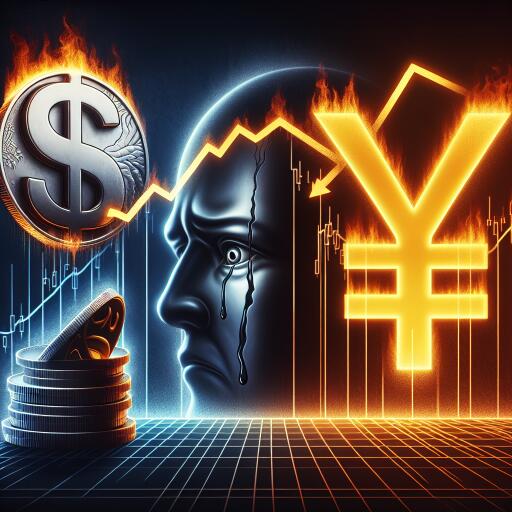Dollar slips; yen briefly jumps as intervention worries linger
The dollar started the week on a softer note, remaining within striking distance of its nearly eight-week peak, while the yen experienced a temporary boost, staying close to the critical 160 level that previously triggered verbal interventions from Japanese officials.
In early trading, the yen dipped to its weakest point since April 29 at 159.94 per dollar, a level not seen since it hit a 34-year trough of 160.245, prompting Japan to spend approximately 9.8 trillion yen in an effort to prop up the struggling currency.
A swift rally in the yen during the European morning pushed it to as high as 158.75 per dollar, signaling heightened market sensitivity to potential intervention moves.
Michael Brown, a senior research strategist at Pepperstone, commented on the yen’s movements, “Certainly didn’t look like intervention … nonetheless, it does speak to how jittery the market likely is about the prospect for intervention,” adding, “I think so long as any further weakness is not especially rapid or disorderly in nature, the Ministry of Finance (MoF) are unlikely to step in just yet.” The yen last stood slightly stronger at 159.54 per dollar.
Amid the fluctuations, Japan’s top currency diplomat Masato Kanda remarked that authorities are prepared to take appropriate measures if there are excessive movements in the foreign exchange market, underscoring that Japan’s inclusion on the U.S. Treasury’s monitoring list would not limit their actions.
The yen has been under pressure following the Bank of Japan’s (BOJ) decision earlier this month to delay scaling back its bond-buying stimulus until July, leading to a 1.5% decline in June.
A BOJ meeting summary revealed some policymakers advocated for a timely interest rate hike, citing inflation potentially exceeding expectations. The yen’s susceptibility to U.S. Treasury yields has contributed to its more than 10% depreciation against the dollar this year, driven by the significant interest rate differential between Japan and the United States.
Attention now turns to the U.S. personal consumption expenditures (PCE) price index release due on Friday, with analysts expecting the annual growth rate to decelerate to 2.6% for May. A weaker figure could reinforce expectations for a rate cut by September, a scenario that futures currently assign a 70% likelihood.
The dollar index, comparing the dollar against six major currencies, was observed at 105.56, retreating slightly from the nearly eight-week peak of 105.91 reached last week.
Political events are also in focus this week, including the first U.S. presidential debate on Thursday and the initial round of voting in the French elections over the weekend. Simon Harvey, head of FX analysis at Monex, noted, “You’re going to see a lot of defensive positioning going into the first round of the French election and U.S. presidential debate. While there is a sense of calm which is weighing on the dollar this morning, political risk is still a decent source of strength for the dollar and we expect the dollar index to finish the week higher.”
The euro showed some resilience, gaining 0.3% to $1.0727 despite being down 1.2% for June. Pressure on the euro has been evident since French President Emmanuel Macron unexpectedly called for a snap election earlier in the month.
In the French electoral landscape, the far-right National Rally (RN) party and its allies are poised to lead the first round with an anticipated 35.5% of the vote, according to recent polls. RN lawmaker Jean-Philippe Tanguy, a potential finance minister if RN forms the next government, affirmed the party’s commitment to adhere to European Union fiscal regulations.
Meanwhile, the Chinese yuan was seen trading near a seven-month low at 7.26 per dollar, affected by the overall strength of the dollar and concerns over the economic outlook of the world’s second-largest economy.
